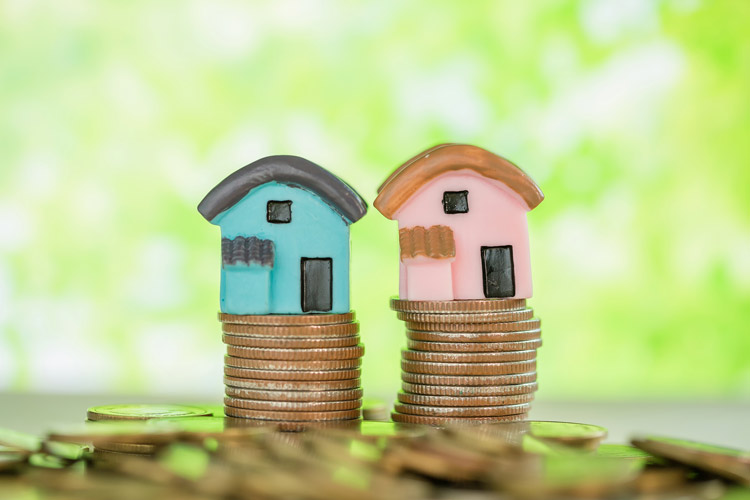4 Primary Factors that Influence Home Values
Originally Published on 7/13/21: Updated with 2023 statistics and added additional content.
While the value of your home is ultimately determined by what buyers are willing to pay for it, several factors can influence a house’s price. From location and neighborhood comparable sales (comps) to the home’s age and condition, Maleno, a family-owned custom building and real estate company, has compiled a list of four main factors that influence the price of your home.
1. Supply and Demand
Like any good or service, the housing market relies on supply and demand. When the demand for housing is low, and the supply is high, prices typically decrease. This scenario is referred to as a "cold market."
When the demand for housing is high, and the supply is low, the cost of a home may increase. This scenario is referred to as a "hot market."
As a seller, you’ll thrive in a hot market. Low housing supply or the demand for a specific location can lead to a bidding war, wherein two or more parties compete for ownership of a property by increasing their bids.
Economic indicators, such as gross domestic product (GDP), employment data, and the price of goods, can help sellers and buyers gauge what the housing market will look like. Essentially, the housing market is directly tied to economic activity.
Traditionally, if money becomes scarce and more difficult to borrow, fewer buyers enter the market searching for a home, and demand decreases. Supply may also decrease if homeowners cannot sell their homes for their desired amount. Additionally, interest rates generally rise when the economy is doing well, which increases mortgage loans and the overall cost of a home.
Paradoxically, despite 20-year high-interest rates, the housing market is still hot. Aside from a quarter-long dip in 2020 and another at the end of 2022, real estate prices continue to trend upward, and days on the market continue downward.
As of third-quarter 2023, the median listing home price in Erie, PA, was $174,900, trending up 17.4 percent year-over-year. Further, the sale-to-list price ratio is 100.05%, meaning most sellers get the asking price or slightly above for their homes. What's more, homes are selling in a mere 31 days.

2. Location and Neighborhood Comps
Location plays one of the most essential roles in determining the cost of a home, and there are individual factors to consider, such as:
- Lot Location: nearby schools, bodies of water, highways, amenities, grocery stores, gas stations, hospitals, and other infrastructures
- Traffic and Noise Level: busy roads, construction
- Safety: high or low crime rates
- Potential for Development: lack or abundance of land available for growth
When reselling your home and considering an asking price, look to the other houses in your neighborhood. If you’re unsure how to price your home, reach out to a real estate agent specializing in your area.

3. Size and Layout
According to a 2023 analysis, the median for single-family square floor area registered at 2,261 square feet, and the mean (average) square footage for new single-family homes stood at 2,469 square feet. However, the median size varies significantly between rural, suburban, and urban areas.
So while a “big” house is relative to its location, typically, the bigger the home, the higher the price point in a particular area. But it’s not just size that matters; it’s the layout and design as well. In a recent study by the National Association of Home Builders, researchers found what homebuyers want most:
|
|

4. Age and Condition
Typically, newer homes will cost more than a home that was built 50 or more years ago due to wear and tear and changes in the way houses are constructed. Often the higher price is worth it to buyers as they’ll likely avoid repairs in the near future.
On the flip side, if a home bears historical significance and the architecture is in vogue at the time, a home’s value can increase with age.
Just keep in mind, that many buyers want their homes to be move-in ready. To better position your home to receive an above-market offer, be sure to:
- Clean
- Declutter
- Deodorize
- Emphasize key selling points
- Enhance curb appeal
- Make any necessary repairs: e.g. leaks, cracks in flooring, screw holes in walls, broken appliances
- Remove personal photos from walls
- Repaint
Be sure to also find a seasoned real estate agent that can help you market the home.
Choosing Maleno
Unsure of how to get your home ready for listing and enter the housing market? Maleno Real Estate is here to help! Our team of seasoned real estate professionals will provide you with all the necessary housing information and guide you through every step of the selling process. If you’d like to learn more about Erie's housing market, our current listings, our custom building and design process, or even find an agent, contact us today!
Contributed by Matt Flowers
Let's Start A Conversation!





